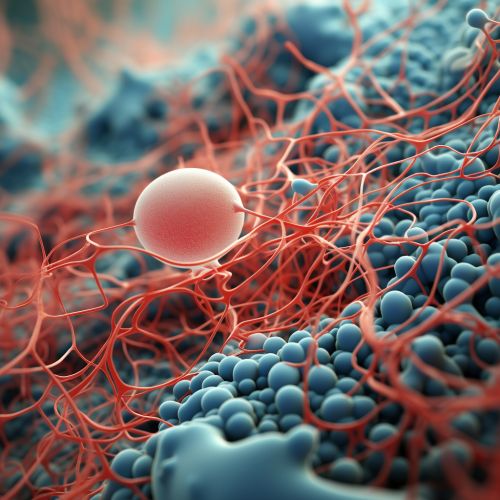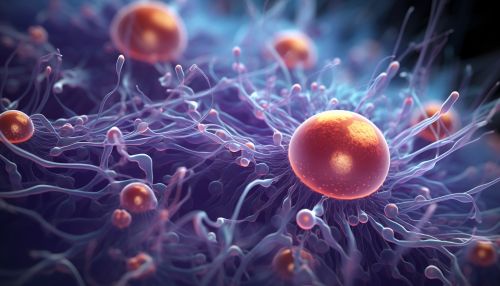Sclerocyte
Introduction
A Sclerocyte is a specialized type of cell found in various organisms, particularly invertebrates such as sponges and corals. These cells are responsible for the production of structural elements, including spicules and spongin fibers, which provide support and protection to the organism. The term "sclerocyte" is derived from the Greek words "skleros", meaning hard, and "kytos", meaning cell, reflecting the cell's role in creating hard, structural components.


Function
Sclerocytes are primarily involved in the production of structural elements within the organism. These elements can include spicules, which are needle-like structures found in sponges, and spongin fibers, which form the skeleton of certain sponge species. The sclerocytes secrete these elements, which then harden to form a rigid structure.
In addition to their role in structural support, sclerocytes may also play a role in the organism's defense mechanisms. The spicules and spongin fibers they produce can deter predators, as they make the organism difficult to consume or damage.
Structure
Sclerocytes are typically small, round cells, although their exact morphology can vary depending on the species and the specific structural elements they produce. They contain a large nucleus and a significant amount of cytoplasm, which houses the machinery necessary for the production of spicules or spongin fibers.
The sclerocytes are often found in clusters, particularly in areas where new structural elements are being formed. They may also be distributed throughout the organism's body, ready to produce new spicules or fibers as needed.
Distribution
Sclerocytes are found in a variety of invertebrate species, most notably in sponges and corals. In sponges, they are responsible for the production of spicules and spongin fibers, which form the sponge's skeleton. In corals, sclerocytes produce the hard, calcium carbonate skeleton that gives the coral its structure.
In addition to these groups, sclerocytes have also been identified in other invertebrate groups, including certain mollusks and echinoderms. In these organisms, the sclerocytes may play a similar role in structural support, although their exact function can vary depending on the species.
Role in Research
Sclerocytes are of particular interest to researchers due to their role in the production of structural elements. Understanding how these cells function could provide insights into the development and evolution of invertebrate species, as well as potential applications in materials science and engineering.
For example, the spicules produced by sclerocytes in sponges have unique mechanical properties that could inspire the design of new materials. Similarly, the ability of sclerocytes to produce hard, mineralized structures could have implications for the development of new biomaterials.
